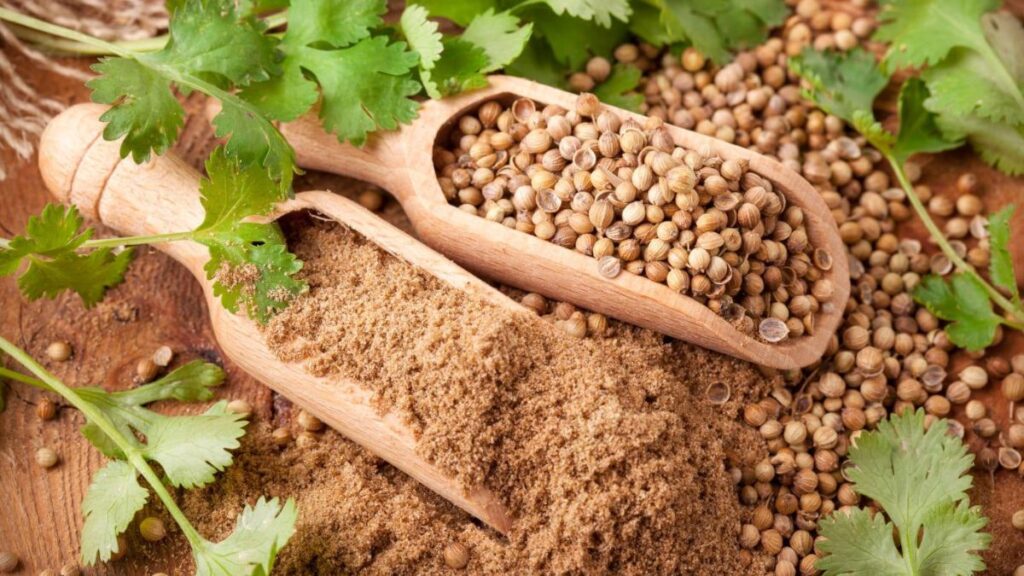Koriandri, commonly known as coriander or cilantro, is more than just a garnish on your favorite dishes. This vibrant herb adds flavor and freshness but also boasts an impressive array of health benefits that often go unnoticed. From ancient civilizations to modern kitchens, koriandri has woven its way into the fabric of culinary traditions across the globe. Whether you’re a seasoned chef or just starting your cooking journey, understanding this multifaceted herb can elevate both your meals and overall wellness. Let’s dive into the world of koriandri and discover what makes it a powerhouse in nutrition and health!
What is Koriandri?
Koriandri, often referred to as coriander or cilantro, is a versatile herb belonging to the Apiaceae family. Its fresh leaves and seeds are celebrated for their distinct flavors and aromas.
The leaves, known for their bright green color and feathery appearance, add a refreshing taste to dishes. Meanwhile, the seeds have a warm, spicy flavor that’s commonly used in various cuisines worldwide.
Koriandri thrives in temperate regions but can be grown year-round in warmer climates. Both its culinary and medicinal properties make it an essential ingredient in many households.
From Indian curries to Mexican salsas, koriandri enhances meals with its unique zest while offering a wealth of nutrients packed into each leaf and seed.
History and Origin of Koriandri
Koriandri, commonly known as coriander or cilantro, has a rich history that stretches back thousands of years. Its origins trace to regions around the Mediterranean and Asia. Ancient civilizations revered this herb for its culinary uses and medicinal properties.
In Egypt, koriandri was found in tombs dating back to 3000 BC. It was often associated with preservation practices due to its aromatic qualities. The Greeks also valued it; they used it not only in cooking but as a fragrant addition to their baths.
As trade routes expanded, koriandri made its way across continents. By the Middle Ages, it had established itself in European kitchens. Meanwhile, Indian cuisine embraced it wholeheartedly, where both leaves and seeds became staples.
Today, koriandri is celebrated globally for its distinct flavor and versatility in various dishes from salsas to curries. Its journey through time reflects humanity’s enduring love affair with this remarkable herb.
Nutritional Value of Koriandri
Koriandri, commonly known as coriander or cilantro, packs a nutritional punch. This vibrant herb is low in calories yet rich in essential vitamins and minerals.
A standout feature of koriandri is its high vitamin K content. Just a small handful provides more than enough for your daily needs. Vitamin K plays a crucial role in bone health and blood clotting.
Additionally, koriandri contains significant amounts of vitamins A and C. These antioxidants are vital for maintaining healthy skin and boosting the immune system.
Minerals like potassium, calcium, and magnesium also make their presence felt in this humble herb. They contribute to heart health and overall bodily functions.
With dietary fiber included too, koriandri supports digestive health. Incorporating it into meals not only enhances flavor but also adds valuable nutrients to your diet.
Health Benefits of Koriandri
Koriandri, commonly known as coriander or cilantro, offers an array of health benefits that can enhance your well-being. Its leaves and seeds are packed with antioxidants, which help combat oxidative stress in the body.
Rich in essential nutrients like vitamins A, C, and K, koriandri supports immune function while promoting skin health. The presence of dietary fiber aids digestion and helps maintain a healthy gut.
Additionally, koriandri may have anti-inflammatory properties that can reduce the risk of chronic diseases. Studies suggest it could assist in lowering cholesterol levels and improving heart health.
Beyond these benefits, some research indicates that koriandri might possess antimicrobial qualities. This makes it a fantastic addition to various dishes for not just flavor but also nutritional value.
How to Incorporate Koriandri into Your Diet
Incorporating koriandri into your diet can be a delightful adventure. Start with fresh leaves, often used as a garnish. Sprinkle them over soups, salads, or tacos for an aromatic touch.
If you enjoy cooking, consider blending koriandri into curries and sauces. Its distinct flavor enhances both vegetarian and meat dishes beautifully.
For those who love smoothies, add a handful of fresh leaves to your next blend. The unique taste pairs surprisingly well with fruits like mango or pineapple.
Koriandri seeds can also elevate your spice game. Toast the seeds lightly before grinding them into powder for use in various recipes.
Try infusing olive oil with dried koriandri for a fragrant dressing that adds depth to any salad. Experimenting with this herb opens up new culinary pathways while boosting nutrition!
Recipes Using Koriandri
Koriandri, or coriander, adds a fresh burst of flavor to countless dishes. Start with a simple koriandri pesto. Blend fresh leaves with garlic, nuts, and olive oil for a vibrant sauce that pairs well with pasta or grilled vegetables.
For something heartier, try coriander-infused rice. Cook your favorite grains and toss in chopped koriandri along with lime juice and diced tomatoes for an aromatic side dish.
If you’re craving something warm, consider a spicy koriandri chicken stew. Sauté onions and garlic before adding chicken pieces seasoned generously with ground coriander. Simmer everything together until tender for a comforting meal.
Salads can also shine with the addition of this herb. Mix chopped koriandri into cucumber salad dressed in yogurt for an extra zesty kick that refreshes the palate. Each recipe is an opportunity to explore the unique taste of koriandri while indulging in its health benefits too!
Potential Side Effects and Precautions
While koriandri is celebrated for its numerous health benefits, it’s important to be aware of potential side effects. Some individuals may experience allergic reactions, especially those sensitive to plants in the Apiaceae family.
Digestive issues can arise as well. Overconsumption may lead to symptoms like gas or an upset stomach. Moderation is key when adding this herb to your meals.
Pregnant women should exercise caution, as high amounts could stimulate uterine contractions. Consulting with a healthcare professional is advisable before making significant dietary changes.
If you’re on blood-thinning medications, koriandri might interfere with their effectiveness due to its mild anticoagulant properties. Always communicate any dietary adjustments with your doctor if you have underlying health conditions or are taking medication.
Conclusion
Koriandri is more than just a flavorful herb; it’s a treasure trove of health benefits and nutritional value. With its rich history rooted in various cultures, it has found its way into kitchens around the world. The impressive nutritional profile offers essential vitamins and minerals that promote overall wellness.
Incorporating koriandri into your diet can be simple and enjoyable. From fresh salads to hearty soups, this versatile herb enhances dishes while providing numerous health advantages. Whether you’re looking to improve digestion, boost immunity, or add vibrant flavor to your meals, koriandri stands out as an excellent choice.
Though generally safe for most people, being mindful of potential side effects ensures you enjoy all of its benefits without any drawbacks. Experimenting with recipes will not only elevate your cooking but also encourage healthy eating habits.
As awareness grows about the importance of natural ingredients in our diets, incorporating koriandri could become a staple practice for many individuals seeking both taste and nutrition. Embracing this aromatic herb may very well lead you on a path toward better health and culinary delight!





